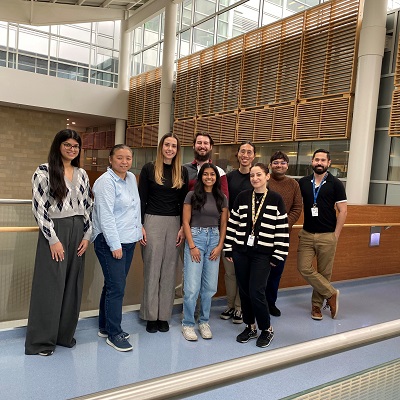 “Our study shows that pericytes have the power to repair the brain,” said Dr. Jing Wang (second from left). “It also shows that we can target different subtypes of pericytes to get different types of repair.”Researchers at The Ottawa Hospital and the University of Ottawa have found a new way to create neurons – a discovery that could be a major step forward in developing treatments for stroke and traumatic brain injury.
“Our study shows that pericytes have the power to repair the brain,” said Dr. Jing Wang (second from left). “It also shows that we can target different subtypes of pericytes to get different types of repair.”Researchers at The Ottawa Hospital and the University of Ottawa have found a new way to create neurons – a discovery that could be a major step forward in developing treatments for stroke and traumatic brain injury.
The study, led by Dr. Jing Wang, focused on cells called pericytes that surround blood vessels in the brain and other organs. Dr. Wang and her team used single-cell RNA sequencing to identify two distinct populations of pericytes, which respond to brain injury differently to give rise to neurons or blood vessels, respectively, in animal models. Using lab-grown pericytes, the team then mimicked a stroke in a dish and showed that one of the pericyte populations could give rise to functional neurons. They further identified the molecular mechanisms behind the changes and developed a targeted drug combination to enhance the production of neurons from pericytes.
“Our study shows that pericytes have the power to repair the brain,” said Dr. Wang, senior scientist at The Ottawa Hospital and associate professor at the University of Ottawa. “It also shows that we can target different subtypes of pericytes to get different types of repair.”
See Theranostics for details.
Authors: Allison Loan, Nidaa Awaja, Margarita Lui, Charvi Syal, Yiren Sun, Sailendra N Sarma, Ragav Chona, William B Johnston, Alex Cordova, Devansh Saraf, Anabella Nakhlé, Kaela O'Connor, Jacob Thomas, Joseph Leung, Matthew Seegobin, Ling He, Fredric E Wondisford, David J Picketts, Eve C Tsai, Hing Man Chan, Jing Wang.
Core resources: StemCore, CBIA, Human Pluripotent Stem Cell Facility, Global Tissue Consenting
Funding: Heart and Stroke Foundation of Canada, Queen Elizabeth II scholarship, University of Ottawa Brain and Mind Research Institute, Natural Sciences and Engineering Research Council of Canada, Ontario Graduate Scholarship, New Frontiers in Research Funds, Canadian Institutes of Health Research.
